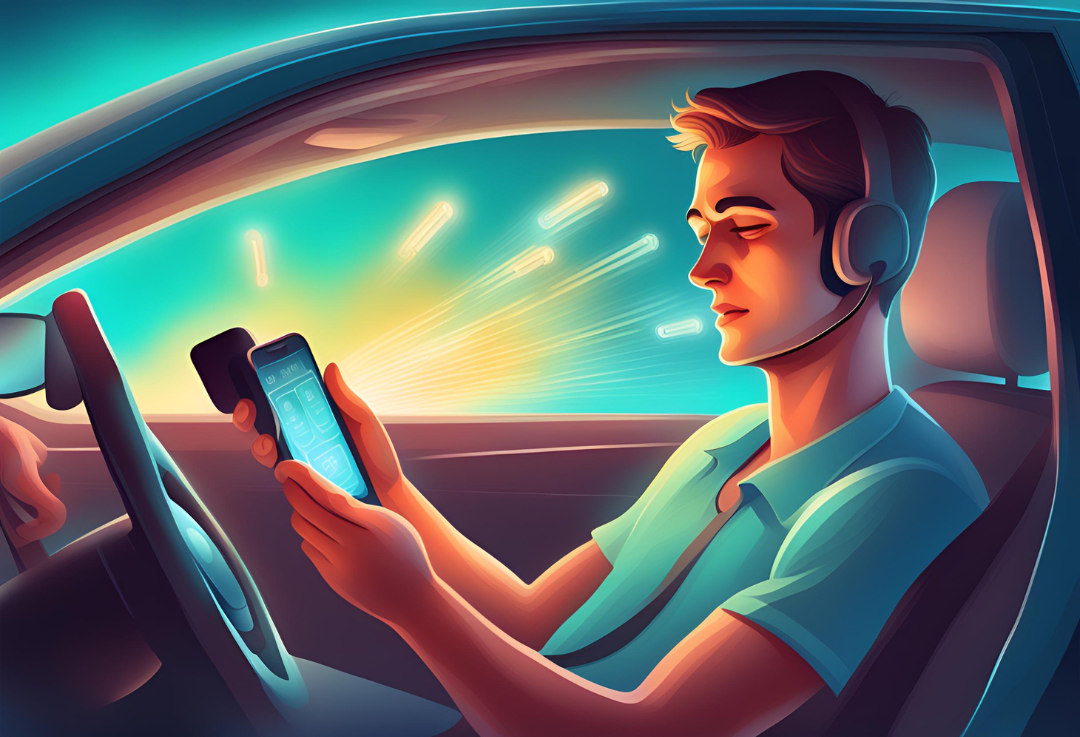Why Are We Not Allowed to Text While Driving?
In today's fast-paced world, staying connected through our mobile devices has become the norm. However, using these devices while driving poses significant risks. Texting while driving is one of the most dangerous distractions and is prohibited by law in many places for a very good reason. At Get Drivers Ed, we emphasize the importance of understanding and adhering to these laws to ensure road safety. In this blog, we will delve into why texting while driving is prohibited, the dangers it poses, and how our drivers ed program can help you stay safe on the road.
The Dangers of Texting While Driving
Texting while driving is particularly hazardous because it involves all three types of distractions:
Visual Distraction: Takes your eyes off the road.
Manual Distraction: Takes your hands off the wheel.
Cognitive Distraction: Takes your mind off driving.
These combined distractions significantly impair your ability to drive safely. Here’s a closer look at why these distractions are so dangerous:
1. Delayed Reaction Time
Texting slows down your reaction time. When you take your eyes off the road for even a few seconds to read or send a text, you may fail to notice a sudden stop, a pedestrian crossing, or an obstacle in your path. This delayed reaction can result in serious accidents. Studies have shown that at 55 mph, sending or reading a text takes your eyes off the road for about five seconds. During that time, you would have driven the length of a football field without looking at the road.
2. Reduced Situational Awareness
Effective driving requires constant awareness of your surroundings. Texting diverts your attention away from the road, reducing your situational awareness. You are less likely to notice changes in traffic flow, road signs, or signals, which can lead to collisions. This lack of awareness can be particularly dangerous in complex driving environments such as intersections and highways.
3. Cognitive Overload
Driving is a complex task that demands full cognitive engagement. When you’re texting, your brain is multitasking, which diminishes your ability to process information and make quick decisions. This cognitive overload increases the likelihood of making errors that could cause accidents. Research indicates that cognitive distractions can impair a driver's ability to recognize hazards and respond appropriately, making texting while driving exceptionally risky.
Statistics Highlighting the Risks
Numerous studies and statistics highlight the severe risks associated with texting while driving:
According to the National Highway Traffic Safety Administration (NHTSA), texting while driving increases the risk of a crash by 23 times compared to driving without distractions.
The NHTSA also reports that in 2019, distracted driving claimed 3,142 lives.
A study by the Virginia Tech Transportation Institute found that drivers who text while driving are six times more likely to be involved in a crash than those who focus solely on driving.
These statistics underscore the critical need to avoid texting while driving to ensure road safety. The data highlights the preventable nature of many road accidents caused by this dangerous behavior.
Legal Implications
Due to the high risk associated with texting while driving, many states and countries have implemented strict laws to prohibit it. Violating these laws can result in hefty fines, points on your driving record, and even license suspension. At Get Drivers Ed, we educate our students about these legal implications to emphasize the seriousness of this issue. Understanding the legal consequences reinforces the importance of following these laws to maintain a clean driving record and avoid penalties.
How Get Drivers Ed Helps You Stay Safe
At Get Drivers Ed, we provide comprehensive drivers education that addresses the dangers of distracted driving, including texting. Here’s how our program helps you develop safe driving habits:
1. Awareness and Education
We provide detailed information about the risks and consequences of texting while driving. Our courses include real-life examples and statistics to highlight the severity of this issue. By using multimedia presentations, testimonials from accident survivors, and interactive discussions, we ensure that the message resonates with our students.
2. Practical Strategies
Our program teaches practical strategies to avoid distractions, such as setting your phone to 'Do Not Disturb' mode while driving, using hands-free devices responsibly, and planning your route before you start driving. We also discuss the importance of creating a distraction-free environment by minimizing in-car disruptions.
3. Defensive Driving Techniques
We emphasize defensive driving techniques that help you anticipate and respond to the actions of other drivers who may be distracted. This proactive approach can prevent accidents caused by others' negligence. Techniques such as maintaining a safe following distance, being aware of escape routes, and recognizing signs of distracted driving in others are crucial components of our training.
4. Hands-On Practice
Through hands-on practice sessions, we reinforce the importance of staying focused and managing distractions. Our experienced instructors provide personalized feedback to help you develop safe driving habits. Practical exercises include simulated driving scenarios where students practice maintaining attention and reacting to potential hazards.
5. Encouraging Responsibility
We instill a sense of responsibility in our students by emphasizing the serious nature of driving. Understanding the potential consequences of distracted driving helps drivers make more conscientious choices on the road. We encourage students to take a pledge against distracted driving and to advocate for safe driving practices within their communities.
Conclusion: Stay Focused with Get Drivers Ed
Texting while driving poses significant risks that endanger not only the driver but also passengers, pedestrians, and other road users. Understanding these dangers and learning how to manage distractions are crucial steps towards becoming a responsible driver. At Get Drivers Ed, we are dedicated to providing comprehensive education that equips drivers with the knowledge and skills needed to stay safe on the road. Enroll in our drivers education program today and take the first step towards distraction-free driving. Visit Get Drivers Ed to start your journey to safer driving now. By committing to focused and responsible driving, you contribute to making the roads safer for everyone.

